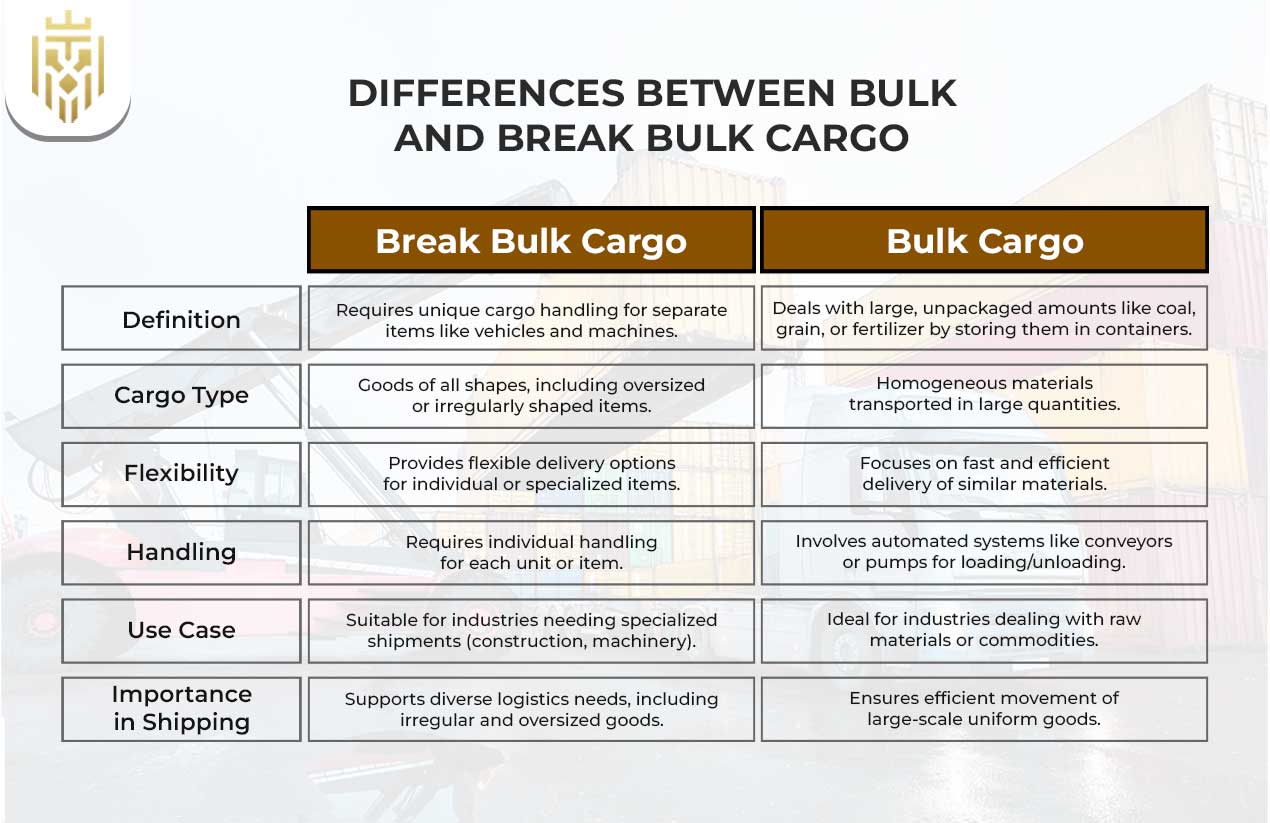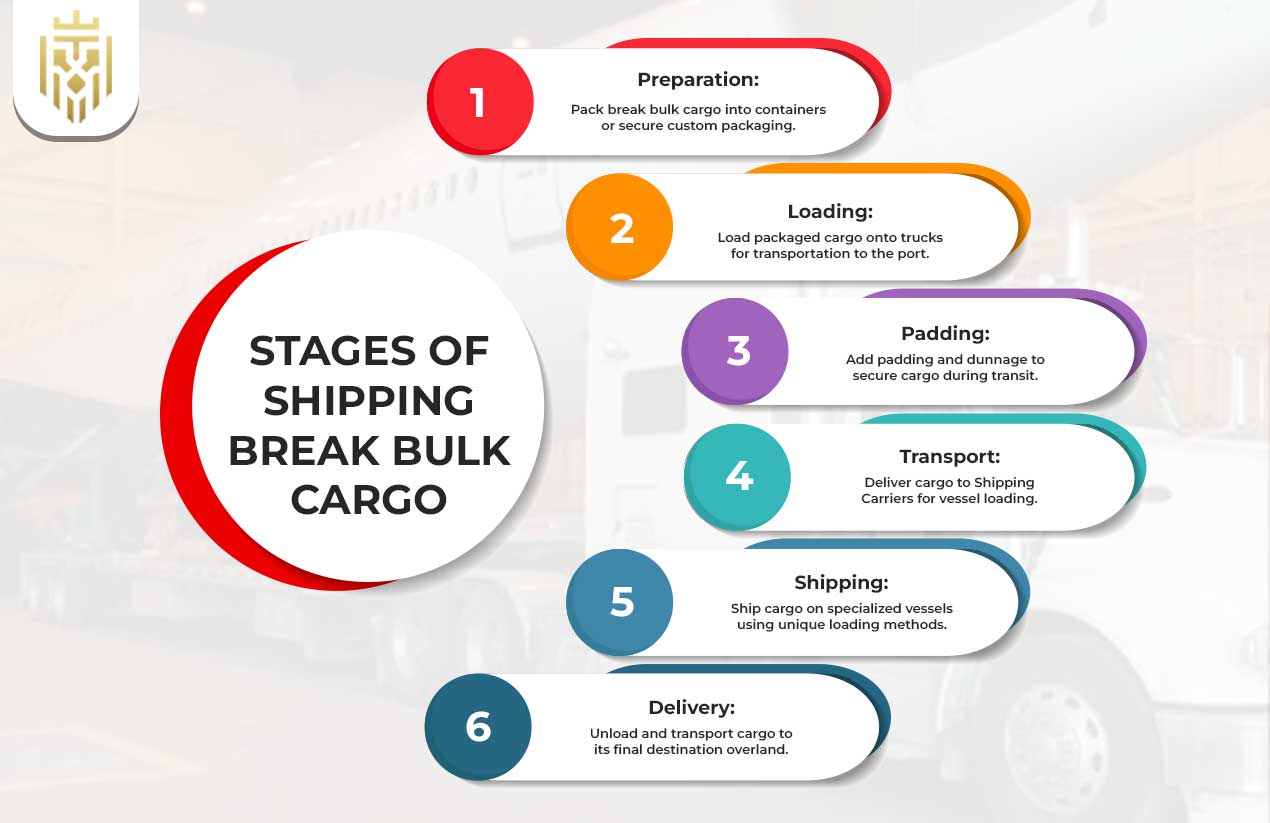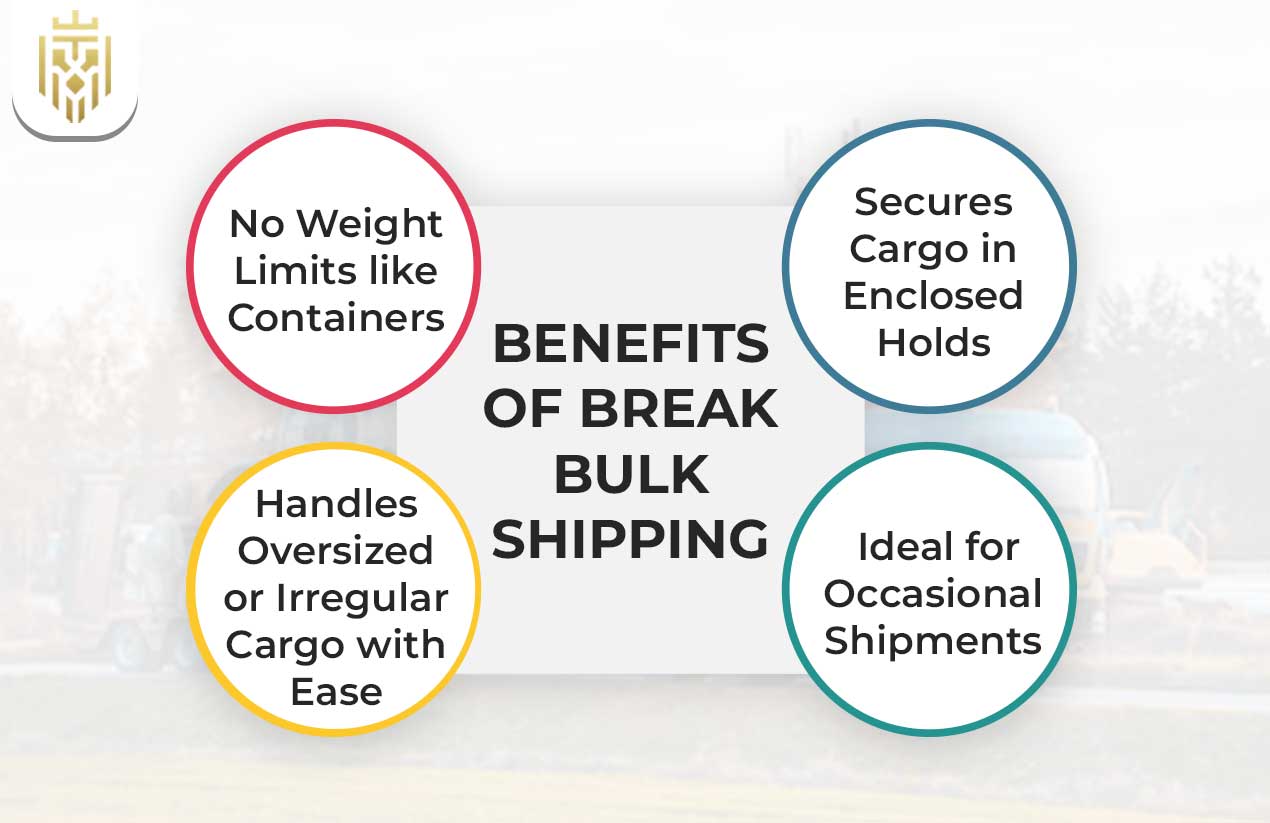What is Break Bulk Cargo?
Break bulk cargo includes any items that are too big, oddly shaped, or too bulky to fit inside an ordinary cargo container. This type of shipping involves specialized cargo handling because these ships carry items one by one or a small number of pieces at a time on their decks or inside their main space. Companies transport their non-containerized goods with break-bulk shipping because regular shipping methods are not good enough for how they need these products handled.
When should this type of Transportation be considered?
Break bulk shipping moves oversized goods including project materials and equipment that cannot fit into containerized cargo. These shipments demand special cargo handling which makes shipping carriers a great choice for this work. This approach helps industries move irregularly shaped cargo items more effectively than traditional bulk cargo handling.
What is the difference between Bulk and Break Bulk Cargo?
Break bulk cargo units need unique cargo handling for separate items such as machines and vehicles, while bulk cargo handling deals with large unpackaged amounts like coal or grain by storing them in containers. Break bulk shipping move goods of all shapes, providing flexible delivery options. Bulk cargo handling enables ships to bring large amounts of similar materials for fast and efficient delivery. Both break bulk and bulk cargo handling are needed to run shipping and logistics operations well.

How is Break Bulk Cargo Shipped?
Shippers move break bulk cargo on particular ships using unique vessel loading and unloading methods. First, cargo handlers put products in containers, then load them onto trucks, add padding to keep everything safe, and bring the cargo to shipping carriers to transport it over land. This break bulk shipping approach supports industries that cannot rely on containerized cargo, ensuring efficient delivery of oversized goods.

Types Of Cargo shipped as Break Bulk
Break bulk cargo consists of vehicles that load onto trains, boats, or trailers plus non-standard items like tanks, silos, and pipes alongside heavy equipment including cranes, turbines, and infrastructure materials like steel beams and bridge parts.
Vehicles:
Vehicles like trains, boats, or trailers, too large for containerized cargo, are ideal for break bulk shipping. This method allows for specialized cargo handling only certain companies can manage, especially when dealing with large or non-standard vehicles. Shipping carriers apply this system to move goods effectively across their shipping and logistics network.
Odd Shaped Cargo:
Break bulk cargo with unusual shapes demands custom handling procedures for tanks boilers and pipes. The transportation method handles products that don’t fit inside shipping containers because break bulk shipping provides the necessary flexibility. Businesses that don’t use typical bulk cargo systems need this transport approach.
Heavy Machinery and Equipment:
Break bulk shipping is the only way to move heavy machines like excavators and turbines that are unsuitable for containerized cargo. Expert team members handle these pieces of equipment with specialized cargo handling properly to protect them during shipping. Businesses choose break bulk shipping when bulk cargo handling isn’t feasible.
Infrastructure Materials:
The components required to build infrastructure – including steel beams and tower pieces – are transported as separate units, unlike shipping containers. These oversized and unusual items need special cargo handling services more than standard shipping containers can offer. Breakbulk shipping ensures industries have flexible and reliable ways to get their important cargoes safely delivered.
Benefits of Break Bulk Shipping:
Breakbulk shipping delivers all types of large items with no weight restrictions while treating irregular cargo during safe transportation in secure enclosed spaces that service smaller ports for industries beyond bulk loading needs.

No Weight Limits like Containers:
Break bulk shipping helps move large and heavy goods that containerized cargo can’t handle. Moving big industrial loads using proper tools cuts down damage chances and makes the shipment more affordable. This shipping method works better than bulk handling when you need to move big cargoes that can’t be processed with standard handling systems.
Secures Cargo in Enclosed Holds:
Special containers keep break bulk cargo safe from environmental hazards during transportation because they block out external influences. Fragile weather-sensitive items need this shipping method to stay safe during transport. Special cargo handling procedures make break bulk shipping more dependable.
Ideal for Occasional Shipments:
Break bulk shipping gives businesses the option to ship different cargo types when they need it because it works better than containerized shipping. The method lowers shipping expenses and helps with fast cargo handling for items that do not fit standard shapes. Shipping carriers choose this shipping option because it allows them to design personalized shipping and logistics services.
Handles Oversized or Irregular Cargo with Ease:
Break bulk shipping moves large and unusual items using special handling, saves money, and helps protect the environment. This cargo handling system supports industries that need the best way to transport their oversized shipments. Shipping companies use break-bulk shipping to serve smaller ports and handle different kinds of shipments better.
FAQs
1. What is Break Bulk Cargo?
Break bulk cargo includes any items that are too big, oddly shaped, or too bulky to fit inside an ordinary cargo container. This type of shipping involves specialized cargo handling because these ships carry items one by one or a small number of pieces at a time on their decks or inside their main space.
2 . What are the types of cargo shipped in Break Bulk?
Break bulk cargo consists of vehicles that load onto trains, boats, or trailers plus non-standard items like tanks, silos, and pipes alongside heavy equipment including cranes, turbines, and infrastructure materials like steel beams and bridge parts.
3 . What is the difference between Break and Bulk Break Cargo?
Break bulk cargo units need unique cargo handling for separate items such as machines and vehicles, while bulk cargo handling deals with large unpackaged amounts like coal or grain by storing them in containers. Breakbulk shipping offers flexible delivery for various goods, whereas bulk cargo handling allows for the rapid transport of large amounts of similar materials.
4. What are the Benefits of Break Bulk Shipping?
Breakbulk shipping delivers all types of large items with no weight restrictions while treating irregular cargo during safe transportation in secure enclosed spaces that service smaller ports for industries beyond bulk loading needs.
5. Why is Break Bulk Important?
Break bulk shipping helps get large, oddly shaped, or heavy items to their destination by using special cargo handling methods, which helps industries like construction, manufacturing, and infrastructure projects run more smoothly around the world.







